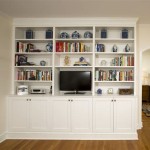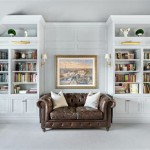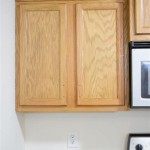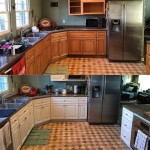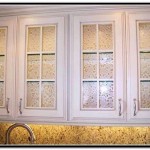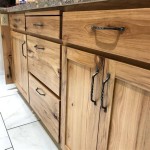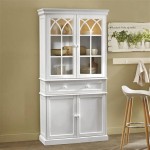Retrofitting Your Kitchen With Vintage Cabinet Hardware Design
Retrofitting kitchen cabinets with vintage hardware offers a straightforward yet impactful method for enhancing a kitchen's aesthetic appeal. This approach allows homeowners to infuse their kitchens with character and charm, transforming the space without undertaking a full-scale renovation. Whether aiming for a complete period revival or simply adding a touch of antique elegance, selecting and installing the right vintage hardware can significantly elevate the kitchen's design.
Understanding Different Vintage Hardware Styles
Before embarking on a hardware retrofitting project, it is essential to understand the various vintage styles available. Researching different eras, such as Victorian, Art Deco, Mid-Century Modern, and others, provides a foundation for informed decision-making. Each style possesses unique characteristics reflected in the hardware's material, finish, and overall design. Familiarizing oneself with these distinctions ensures the selected hardware complements the desired aesthetic.
Sourcing Vintage and Reproduction Hardware
Locating authentic vintage hardware can be a rewarding treasure hunt. Antique shops, flea markets, and online marketplaces offer opportunities to discover unique pieces. However, sourcing vintage hardware can be time-consuming and may require patience to find matching sets in good condition. Reproduction hardware offers a viable alternative, providing a wider selection and guaranteeing consistent sizing and finishes. Reputable manufacturers specialize in recreating vintage designs with meticulous attention to detail, offering a convenient and readily available option.
Considering Existing Cabinetry and Kitchen Style
The existing cabinetry and overall kitchen style play a crucial role in selecting appropriate vintage hardware. The hardware should complement the cabinets' design and finish, creating a cohesive and harmonious look. For example, ornate Victorian hardware might appear out of place on sleek, modern cabinets. Conversely, streamlined Art Deco pulls might clash with traditional, raised-panel doors. Careful consideration of the existing elements ensures the chosen hardware enhances rather than detracts from the kitchen's aesthetic.
Measuring and Choosing Appropriate Hardware Sizes
Accurate measurements are crucial for ensuring the new hardware fits correctly. Measure the existing holes in the cabinet doors and drawers to determine the appropriate center-to-center spacing. If new holes are required, careful planning and precise drilling are essential to avoid damaging the cabinetry. Consider the size and scale of the hardware relative to the cabinets. Overly large pulls can overwhelm smaller cabinets, while diminutive knobs might appear insignificant on larger doors. A balanced approach creates a visually pleasing and functional result.
Preparing Cabinets for Hardware Installation
Proper preparation simplifies the installation process and ensures a professional finish. Thoroughly clean the cabinet surfaces where the hardware will be installed, removing any grease or residue. If filling existing holes, use a suitable wood filler and allow it to dry completely before sanding smooth. This creates a clean and even surface for the new hardware. Having the necessary tools on hand, such as a screwdriver, drill, and measuring tape, streamlines the installation process.
Installing the Vintage Hardware
Installing the new hardware requires careful attention to detail. Align the hardware with the pre-existing or newly drilled holes and secure it using the appropriate screws. Avoid over-tightening, which can damage the hardware or the cabinet surface. Ensure all pieces are securely fastened and aligned correctly. For newly drilled holes, pilot holes can prevent splitting the wood and ensure a clean installation. Taking the time to install the hardware correctly guarantees a long-lasting and aesthetically pleasing result.
Maintaining and Cleaning Vintage Hardware
Maintaining the beauty and functionality of vintage hardware requires regular cleaning and care. Different materials and finishes require specific cleaning methods. For example, brass and copper can be cleaned with gentle polishing compounds, while painted finishes require a milder approach. Avoid using harsh chemicals or abrasive cleaners, which can damage the hardware's finish. Regular dusting and occasional cleaning help preserve the hardware's appearance and prevent buildup of grime and tarnish.

5 Ways To Add New Life Old Cabinets Daniel Kanter
:max_bytes(150000):strip_icc()/2628001_Madis_Ktchn_Sink-2000-27cd2855839741438bf68d399fd4e775-8dde38073ab745b58720d5c48959a5a1.jpg?strip=all)
Vintage Hardware Will Immediately Add Character To Any Space

How To Build Your Own Vintage Style Cabinets Daniel Kanter

How To Build Your Own Vintage Style Cabinets Daniel Kanter

10 Simple Ideas To Update Your Kitchen Cabinets Jenna Sue Design

10 Simple Ideas To Update Your Kitchen Cabinets Jenna Sue Design

Kitchen Design Inspiration For Our Diy Remodel

Transform Your Cabinets With Easy Upgrades Van Dyke S Rers
:strip_icc()/101660611-c8ffef0844e44c2f9790c4dac714ae32.jpg?strip=all)
20 Cottage Kitchen Ideas That Add Cozy Style To Your Space

10 Simple Ideas To Update Your Kitchen Cabinets Jenna Sue Design
Related Posts

